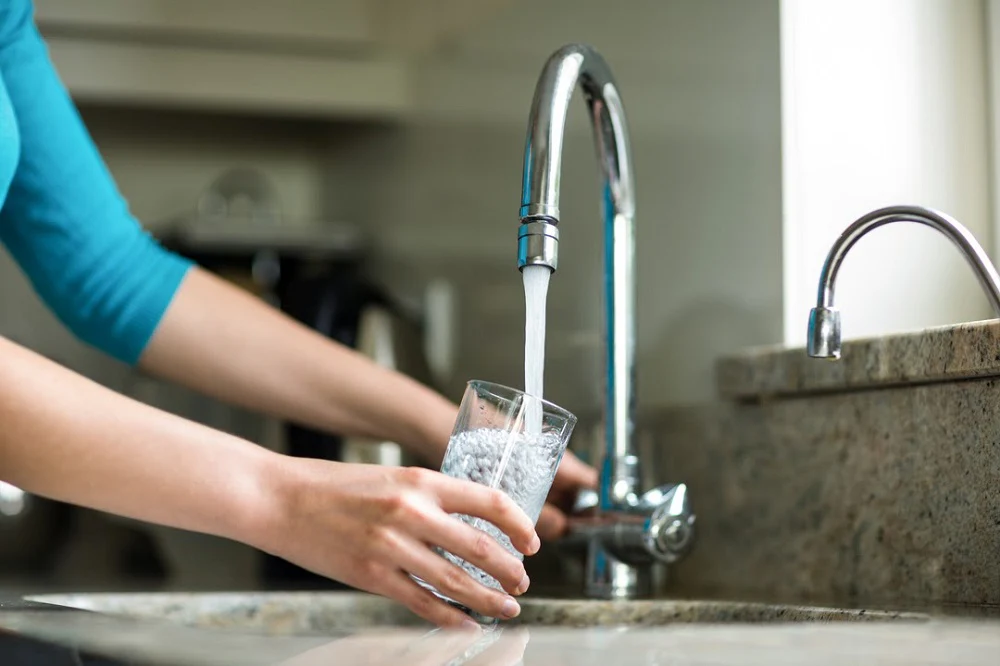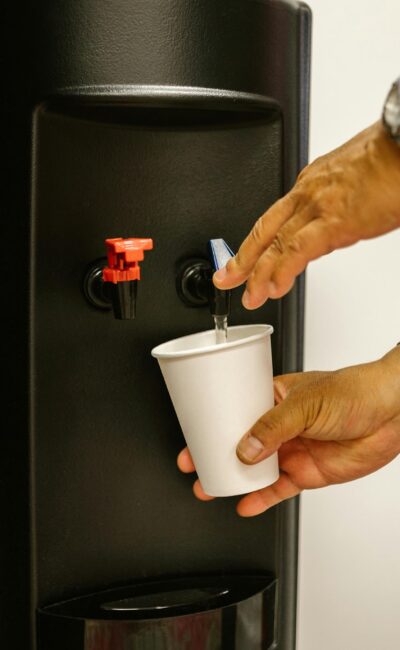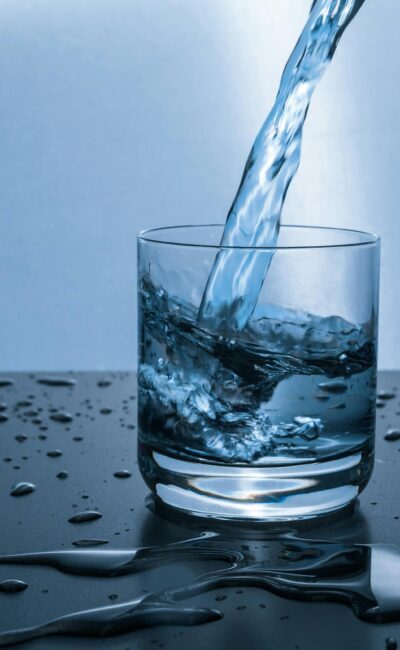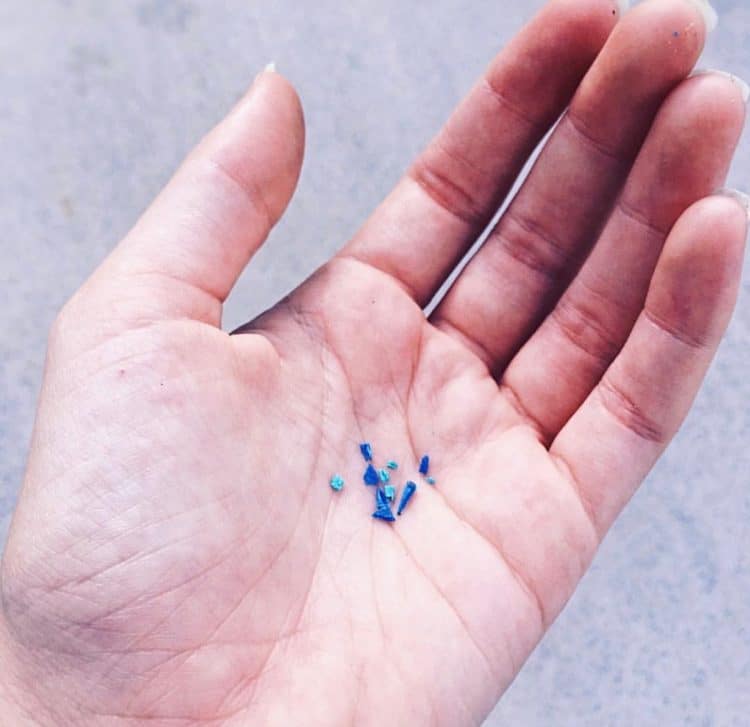Updated July 7, 2024
There are many who can remember the days of drinking straight from the garden hose and right out of the tap before bottled water was popular and when water filtration systems had yet to become mainstream in businesses and households. With the options available now, it’s common to wonder, can you drink sink water? is tap water safe to drink? The answer is yes and no.
The U.S. Environmental Protection Agency (EPA) sets legal limits on over 90 contaminants found in tap water. Cities must follow these guidelines, but can also set their own standards through the Safe Drinking Water Act. Although all states must meet the minimum requirements set forth by the EPA, not all water systems are created equal.
Some are older than others, which allow certain chemicals to leach from the pipes and enter the water stream. This can pose a health risk with contaminated water in the water source. Other systems are located near agricultural or industrial runoff areas, which can pollute the groundwater. In short, there may be varying levels of pollutants and chemicals in the water that comes from your sink, depending on where you live and how old your city’s system is.
The regulations mean there are still pollutants found in tap water. While it’s not technically bad for your health to drink sink water, it’s better to drink filtered water to achieve your daily hydration. Find out more about the type of contaminants that may be found in your water, how to tell if your water is contaminated, and why it’s best to switch to a purified water system when possible.
Common Contaminants Found in Sink Water
Another question you may have is, can you drink sink water and not feel any effects? It depends on what your water contains and how your body reacts. The EPA breaks down each water contaminant into two groups, chemical and microbial.
Chemical contaminants measured in water systems include arsenic, copper, and lead, to name a few. Microbial contaminants factor in bacteria and viruses that are often present, too. Here are a few of the top types of contaminants that may be found in your sink water and the adverse health effects they may cause. It can also help to get a water quality report to help understand your drinking water quality.
Side Effects of Arsenic Exposure
Arsenic is a natural compound found in groundwater. It’s not usually found in amounts deemed harmful to human health. The EPA regulates a low limit of .01 parts per million of arsenic in drinking water. However, there may be a higher concentration found in certain areas, particularly regions with large industrial or farming operations. Ingesting too much arsenic can lead to headaches, drowsiness, and diarrhea, and eventually lead to chronic illness. This is why we encourage people to take advantage of our water machine filter found in our bottleless water dispensers.
Side Effects of Copper and Lead Exposure
The presence of copper and/or lead in drinking water often stems from outdated pipes and water fixtures. Water absorbs these materials as it makes its way to your faucet. According to the Centers for Disease Control and Prevention (CDC), both copper and lead can have adverse health effects on your digestive system. Plus, exposure to high levels of lead can lead to kidney and brain damage, abdominal pain and headaches, among other side effects. This is why it is important to always make sure to check your drinking water supply and make sure you have a water treatment plan.
Compliance for Coliform Levels in Groundwater
Public water systems must comply with the EPA’s set monthly maximum coliform levels which can’t contain more than five percent of the samples taken each month. If more than five percent is found, it must be reported on a state level as well as to the public.
Routine and repeat sample testing must also be analyzed for fecal coliforms or E.coli, since it represents a direct health risk to anyone who consumes it. If you live in a dense agricultural area, there’s a higher chance your water may be affected by bacteria in the water. Drinking straight from the tap may not be the healthiest option.
These are only a few of the main contaminants that may be found in your tap water. The list also includes pesticides, chemicals, bacteria, viruses, and an array of other pollutants. Additionally, some sink water may have a strange odor or taste making it unappetizing to drink, depending on where you live. By EPA standards drinking sink water may not technically be bad, it’s not necessarily good either.
How to Tell If Your Sink Water Is Contaminated
Now that you know part of what may be in your sink water, how do you tell if it’s truly contaminated? First, you can rely on your senses to detect any problems. For example, cloudy water that comes from the tap may indicate the presence of chemicals or unsafe pathogens. It does not matter if it is cold water or hot water, it is always good to check your water resources. Water that’s tinged yellow or brown is never a good visual sign either. It could be a result of chemicals leaching from your water pipes or come from the groundwater due to runoff from nearby factory plants or farms.
Second, factor in how the water tastes and smells. Does it have a metallic taste or smell like rotten eggs? Often, this means there’s a large presence of heavy metals or hydrogen sulfide in the water, which doesn’t make it appetizing to drink. Lastly, consider how the water feels on your hands when washing them at the sink or when taking a shower. Does it dry out your skin and hair? It could be an indicator of higher levels of lead or aluminium in the water.
In addition to relying on your senses, contact your county health department to have your water checked or have it tested by a state certified laboratory, if you’re unsure about its safety levels. The way your water looks, smells, and tastes is linked to possibly higher limits and greater exposure to certain contaminants and pollutants.
Another factor to consider is your location, which may make your tap water more susceptible to contamination. For example, if you’re nearby agricultural setups, your water may contain pesticides and nitrates used to protect crops and bacteria from animal waste. Or, if you notice tiny flakes or particles in the water, it could be an indicator of corrosion, which is common in older homes or cities with outdated water pipes.
Risks to residents due to unsafe drinking water has made headlines over the years. It was made widely known through the PG&E contaminated groundwater case in Hinkley, CA, as well as the Dupont water contamination in West Virginia. These are only two of several communities nationwide that have experienced or are currently experiencing undrinkable tap water.
To ensure you’re drinking safe, clean water, it’s best to pass your tap water through advanced filtration to remove the majority of the unsafe elements that can be found in your water. The question isn’t necessarily can you drink sink water, it’s should you?
Why Filtered Water Is the Better Option
Filtered water is the better option for several reasons. First, it removes the majority of contaminants found in regular tap water and public water, leaving behind a much better look, taste, and smell to the water you drink every day. Since city water reports are due on a yearly basis, there’s a chance sink water could have higher than the regulated minimums at any point following the submission of the annual report.
FloWater is beneficial because it removes up to 99 percent of all chemicals, pollutants, and other elements found in sink water. The filtration process is five times more effective than anything else currently on the market. It transforms water from your tap through multiple levels of filtration to give you the best possible water quality available. The first three steps involve removing particles of all sizes, including bacteria and smaller particles that may still not be filtered out with a standard process.
After the water is completely purified, there’s a filter that adds in a third molecule of oxygen to make the water taste better and helps to sanitize the stainless steel tanks. After that, a proprietary blend of minerals is added to raise the water’s pH level and neutralize acidity in the body. Finally, the water is enhanced with electrolytes, including calcium and potassium, before going through a final coconut carbon filter to give it a crisp, refreshing taste. Our water filters help prevent the need for people to worry about a boil water notice.
Skip the Sink Water to Stay Hydrated
To stay hydrated, you need access to chilled, filtered water you can enjoy. When you have water that tastes good, it encourages people to drink water on a more regular basis.Sink water doesn’t typically cut it for everyday use. It’s better to have water that’s been transformed and stripped of contaminants for a purer, cleaner taste.
Using the FloWater filtered water dispenser allows you to use your tap water source, which eliminates the need for a plastic bottle. Reducing plastic waste is more cost-effective and environmentally-friendly. Take advantage of the advanced option available to you through FloWater to get fresh, crisp water on-demand.
The innovative design of the water refill station is self-sanitizing and limits the buildup of dirt, grime, and germs. It can fill up any size of water container within seconds and always has multiple gallons of purified water ready to go at any time. Rather than risk drinking directly from the sink and ingesting an unknown amount of contaminants every time you’re thirsty, it’s better to rely on a water source that’ll give you crisp, delicious-tasting water.
Sources:
- https://www.epa.gov/dwreginfo/drinking-water-regulation
- https://www.medicalnewstoday.com/articles/241860
- https://www.cdc.gov/niosh/topics/lead/health.html#:~:text=Exposure%20to%20high%20levels%20of,a%20developing%20baby’s%20nervous%20system
- https://www.epa.gov/sites/production/files/2015-11/documents/2005_09_14_faq_fs_homewatertesting.pdf
- https://www.businessinsider.com/signs-tap-water-contaminated-unsafe-2019-5




